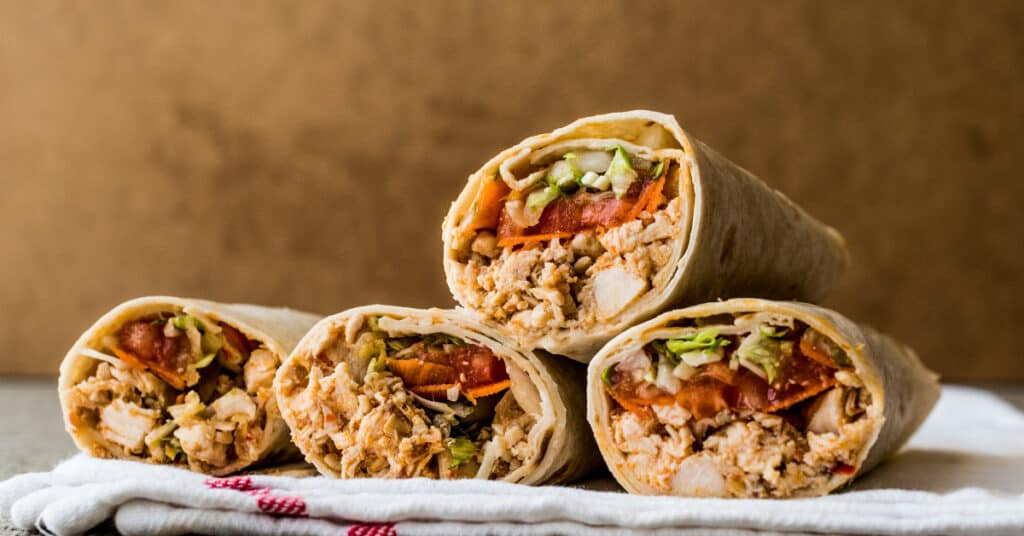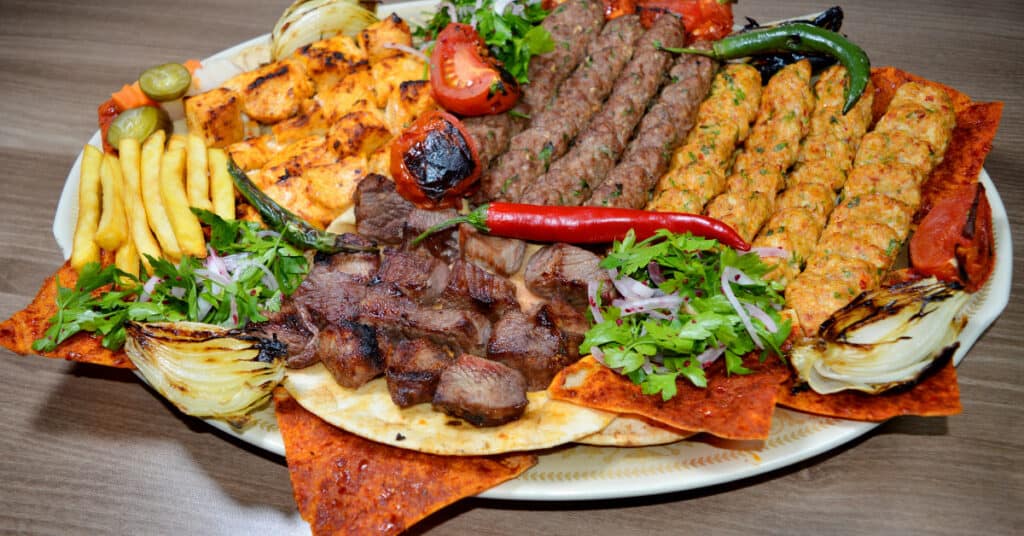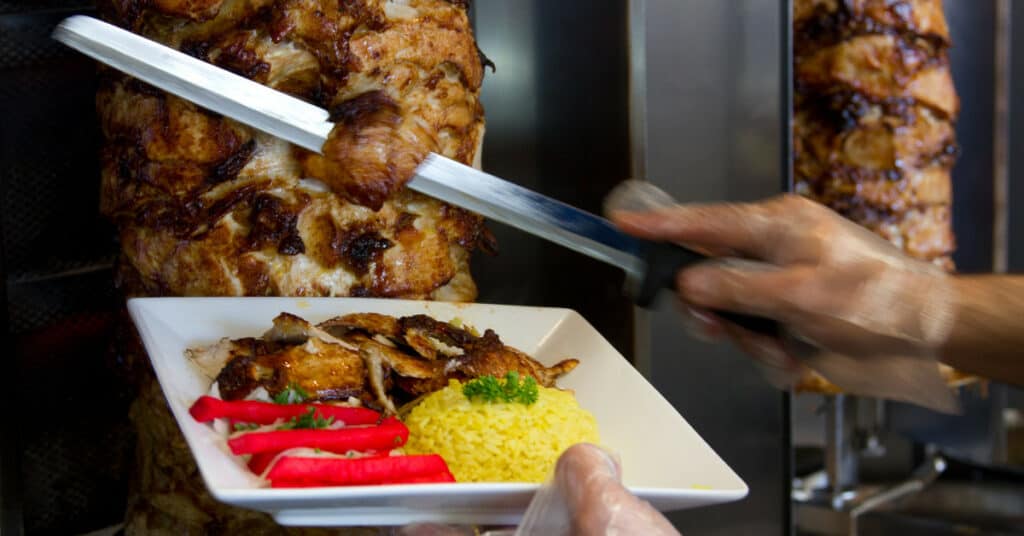**SUMMARY:** Shawarma and kebab are both popular Middle Eastern dishes but have some key differences. Shawarma is typically made from marinated meat cooked on a vertical spit, while kebab refers to skewered and grilled meat. Both are flavorful options, but shawarma offers a more tender texture, while kebab provides a smokier taste. The choice ultimately comes down to personal preference.
Do you need help choosing between going out for shawarma or savoring a kebab for your next meal? Can’t decide which delicious Middle Eastern dish will satisfy your cravings? Let’s delve into shawarma vs kebab and unravel the key differences between these two mouthwatering options.
In this article, we will explore the following subtopics:
- The origins and definition of shawarma and kebab
- The distinct ingredients and cooking methods used in each dish
- The similarities that bring these two delicacies together
- The notable differences that set them apart
So, get ready to embark on a gastronomic journey as we uncover the secrets behind the tantalizing flavors of shawarma and kebab.

Shawarma
Shawarma, a tempting food option originating from the Middle East, has captured food lovers’ hearts and taste buds worldwide. Here are some key aspects of shawarma that make it a truly unique culinary delight:
Definition and Origins
Shawarma, derived from the Arabic word “shawarma,” which means “turning,” refers to a method of preparing meat that involves slow-roasting on a vertical spit. It is believed to have originated in the Levant region and quickly gained popularity throughout the Middle East.
Ingredients and Flavor Profile
The core ingredients of shawarma usually include thinly sliced marinated meat, such as beef, lamb, chicken, or a combination of these. The meat is often flavored with a blend of spices, including cumin, paprika, garlic, and coriander, giving it a rich and aromatic taste. Other essential components of shawarma include:
- Freshly baked pita bread or flatbread
- Creamy tahini or garlic sauce
- Sliced tomatoes, cucumbers, and lettuce for a refreshing crunch.
Cooking Method
Shawarma is traditionally slow-roasted on a vertical rotisserie grill to achieve delectable flavors and tender texture. As the spit rotates, the meat gradually cooks and develops a succulent taste while retaining its juiciness. The slow-cooking process allows the flavors to infuse deeply into the meat, resulting in a mouthwatering experience.
Whether enjoyed in a bustling marketplace or at a local food joint, savoring shawarma often entails a unique experience. The anticipation of the first bite combined with the warm, fragrant aromas triggers a sensory delight that is hard to replicate. Embarking on a culinary adventure with shawarma grants you a chance to embrace the culture and heritage behind this beloved Middle Eastern dish.
So, brace yourself to indulge in the irresistible allure of shawarma and its distinctive flavors. Next, let’s dive into the world of kebab and explore what makes it a standout in its own right.

Kebab
Definition and Origin of Kebab
- Kebab is a popular dish from the Middle East and Mediterranean regions.
- The word “kebab” is derived from the Persian word “kabāb” which means to roast or grill.
- Kebab is typically associated with skewered meat cooked over an open fire or on a grill.
Main Ingredients Used in Kebab
- Kebab can be made with various types of meat, including lamb, beef, chicken, or seafood.
- Other key ingredients include vegetables like onions, bell peppers, and tomatoes.
- The spices and seasonings used in kebabs can vary based on regional and personal preferences.
Cooking Methods for Different Types of Kebab
- There are various kebabs, each with a distinct cooking method.
- Shish kebab involves skewering pieces of marinated meat and grilling them on an open flame or over charcoal.
- Doner kebab is made by stacking layers of meat, typically lamb or beef, on a vertical spit and slowly roasting it.
- Seekh kebab is prepared by shaping the minced meat mixture onto skewers and grilling it until cooked.

Shawarma vs Kebab: Similarities
Common Ingredients
- Both shawarma and kebab feature meat as the main ingredient.
- Both dishes can be made with various types of meat, such as chicken, beef, lamb, or a combination of different meats.
- Both shawarma and kebab often incorporate a mix of aromatic spices to enhance the flavor.
Cultural or Historical Influences
- Shawarma and kebab have been influenced by various cultures throughout history.
- Both dishes originated in the Middle East and have been adapted and embraced by different cuisines worldwide.
- The preparation and cooking methods used for shawarma and kebab have similarities due to shared cultural and historical influences.
Portability and Street Food
- Shawarma and kebab are popular street food options in many countries.
- They are often enjoyed as grab-and-go meals, wrapped in flatbread or pita bread, making them convenient for eating on the move.
- Shawarma and kebab stands can be found in bustling markets and city streets, adding to their appeal as a quick and satisfying snack or meal.

Shawarma vs Kebab: Differences
Meat Cuts and Marinades
- Shawarma typically uses thinly sliced meat, such as chicken, beef, or lamb, marinated in a blend of spices, yogurt, and sometimes vinegar.
- Kebab, conversely, can include minced, ground, or cubed meat, depending on the specific type of kebab. The meat is also often marinated, but the marinades for kebabs may vary in terms of ingredients and flavors.
Cooking Techniques
- Shawarma is traditionally cooked on a rotisserie, where the marinated meat is placed on a vertical spit and slowly roasted and cooked by a heat source on the side. The meat is shaved off the spit and served.
- Kebab, conversely, involves grilling or skewering the meat directly over a fire or on a grill. The cooking time and method can vary depending on the type of kebab being prepared.
Seasoning and Sauces
- Shawarma is known for its distinct blend of spices, typically including cumin, coriander, paprika, turmeric, and garlic. It is often served with garlic sauce, tahini, or yogurt-based dressings.
- Kebab, conversely, can be seasoned with various herbs and spices such as parsley, mint, cumin, and sumac. It is often served with different types of sauces and condiments, including tomato-based sauces, yogurt, or herb-infused oils.
Key Takeaways
In conclusion, shawarma and kebab are popular and delicious dishes that have gained international recognition. While they share similarities in ingredients and cultural influences, they also have distinct differences in meat cuts, marinades, and cooking techniques. Here are the key takeaways from this article:
- Shawarma is a Middle Eastern dish consisting of thinly sliced meat marinated in spices and slow-roasted on a vertical spit. On the other hand, Kebab refers to various grilled or skewered meat dishes originating from the Middle East, South Asia, and the Mediterranean.
- The main ingredients used in shawarma include marinated meat, vegetables, and a variety of spices, while kebab can be made using different types of meat, including beef, lamb, and chicken, with various seasonings.
- Shawarma is typically cooked on a vertical spit, producing tender and juicy meat. In contrast, kebabs can be grilled, skewered, or cooked in a tandoor, offering a different texture and flavor profile.
- Seasonings and sauces vary between shawarma and kebab, with shawarma commonly having garlic sauce or tahini. In contrast, kebabs may be served with yogurt-based sauces or chutneys.
Shawarma and kebab are delectable options for meat lovers, each with unique characteristics and flavors. We encourage you to explore the world of shawarma and kebab, try different variations, and savor the culinary delights they offer.

Frequently Asked Questions
Is shawarma or kebab healthier?
The healthiness of shawarma or kebab varies depending on the type and preparation method. Generally, both dishes contain lean cuts of meat and are often combined with vegetables.
However, the healthiness can be influenced by factors such as the amount of oil used during cooking, the choice of meat, and the condiments or sauces added. To make a healthier choice, opt for lean cuts of meat, limit the use of oil and high-calorie sauces, and incorporate plenty of vegetables.
Can shawarma or kebab be enjoyed by vegetarians?
While shawarma and kebab are traditionally meat-based dishes, vegetarian versions can be found as well. Vegetarian shawarmas often use falafel or vegetable fillings.
In contrast, vegetarian kebabs can be made using ingredients like paneer (cheese), tofu, or various vegetables. These vegetarian alternatives still offer flavorful options for those adhering to a plant-based diet or vegetarian preferences.
Where can I find the best shawarma and kebab?
The best shawarma and kebab can vary depending on personal preferences and location. However, Middle Eastern, Mediterranean, and South Asian restaurants or food stalls are great places to start when looking for authentic shawarma and kebab.
Additionally, exploring local reviews and recommendations can help you discover hidden gems and top-rated establishments known for their delicious shawarma and kebab offerings.

